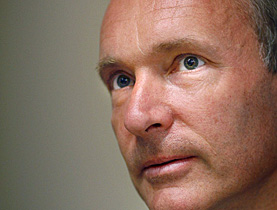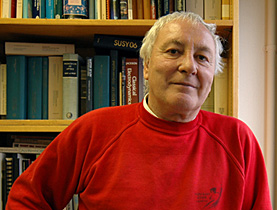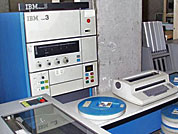Future web will “rock the boat”, says creator

The worldwide web has altered society, but unbelievable future developments will totally "rock the boat", says the web's creator on its 20th birthday.
British scientist Sir Tim Berners-Lee made the remark on Friday at his former place of work, the European Organization for Nuclear Research, or Cern, in Geneva.
While speaking of his fond memories of his time at Cern – “an excellent place to start a new idea” – Berners-Lee stressed the importance of looking to the future of the web.
“The rate of creative new designs and development and innovation on the web is getting faster and faster all the time,” he told the 500-strong audience in his keynote speech.
Today there are upwards of 80 million websites, with many more computers connected to the internet, hundreds of millions of users and billions of web pages.
“The web is not all done; this is just the tip of the iceberg. New changes are going to rock the boat even more. When we get new data out there on the web things will happen that will change the world, as things will be processed on our behalf by machines which are much more powerful,” said Berners-Lee, who is director of the World Wide Web Consortium (W3C), that guides its technological development.
Another key future development is web-to-mobile phone initiatives, he explained.
“Getting the web onto phones is very important, as there are many more browsers on phones than laptops, and in developing societies it’s really exciting as that’s the only way people use the web,” he explained, who added that 80 per cent of the world’s population still doesn’t surf the web.
Berners-Lee is also fired up about collaborative data projects and open social networking projects.
Potential threats
But he also said he was concerned by a number of threats, in particular the emergence of user profiling on the internet and “snooping”.
“The fact that when information travels across the web it isn’t interfered with, snooped or molested, is very important,” Berners-Lee told swissinfo.
He pointed to new systems that can automatically detail a person’s online habits and build up their profile.
“That sort of snooping is really important to avoid,” he added.
He underlined that one of the biggest challenges is to ensure that information available online is used transparently for the specific purpose that its owner intended or consented to, avoiding privacy pitfalls.
“Technologies are also coming that will be able to distinguish the appropriate use of data,” he explained, underlining that the internet “is a cloud.”
“Vague but exciting”
Twenty years ago Berners-Lee handed an ordinary looking document to his supervisor at Cern entitled “Information Management: A proposal” that would revolutionise the way we live today.
His proposal showed how information could be transferred easily over the internet by using hypertext, which would enable users to browse easily between texts on web pages using links.
His boss, Mike Sendall, described the idea as “vague but exciting”. But Sendall gave it the nod and the worldwide web was born, going online in December 1991.
From then on the web experienced exponential growth, “by a factor of ten every year,” he explained.
“The reason that most things happened with the web is that somebody just decided that they were going to make it happen, and did,” said Berners-Lee.
“It was in the air, in the sense that sooner or later it had to happen,” added Belgian computer scientist Robert Cailliau, who worked with Berners-Lee.
Vision and persistence
The web was invented to deal with a specific problem. In the late 1980s Cern was planning to build one of the most ambitious scientific projects ever, the Large Hadron Collider (LHC), the so-called Big Bang machine, which is due to be operational at the end of September.
Berners-Lee’s proposal was seen as a way of automatically sharing information about the LHC project between scientists working in different universities and institutes all over the world.
But it wasn’t all that straightforward.
“Cern was full of smart people, but this was a paradigm shift and they didn’t understand it,” he explained. “You showed them a hypertext link and then another and they used to say ‘So, big deal’. They couldn’t imagine that a link could take them to another link on another part of the planet.”
An important step was made in 1994 when Cern decided not to charge royalties for the web, declaring it an open standard for all to use and that no one should lock it up into a proprietary system.
“Without that it would have died,” said Berners-Lee.
Enthusiasm then spread from PC to PC around the world and volunteers sprang up to develop the technology.
“It took off because people across the world got involved. That’s the exciting thing,” he said.
“Tim told me back in 1989, ‘people just need to agree on a few simple things’. The miracle is that they actually did,” said Ben Segal, Berners-Lee’s mentor at Cern.
“But the vital ingredients behind the web were Tim, and Cern tolerating what he was doing. He had vision and persistence and was a great implementer.”
swissinfo, Simon Bradley in Geneva
The first proposal for the worldwide web was made at Cern by Tim Berners-Lee in 1989, and further refined by him and Robert Cailliau in 1990.
The Web was originally conceived and developed to meet the demand for automatic information sharing between scientists working in different universities and institutes all over the world.
The basic idea of the web was to merge the technologies of personal computers, computer networking and hypertext into a powerful and easy to use global information system.
Important elements in the success of the web included the development of the Unix operating system (1980), the workstation project (1981), the TCP/IP protocol (1983) and the NeXT operating platform (1989).
The first web servers were all located in European physics laboratories and only a few users had access to the NeXT platform on which the first browser ran.
Cern soon provided a much simpler browser, which could be run on any system. A wide range of universities and research laboratories then started to use it. A little later it was made generally available via the internet, especially to the community of people working on hypertext systems.
The existence of reliable user-friendly browsers on PC and Macintosh computers had an immediate impact on the spread of the web.
The world’s First International Worldwide Web conference was held at CERN in May. It was attended by 400 users and developers, and was hailed as the ‘Woodstock of the Web’.
An essential feature was that the web should remain an open standard for all to use and that no-one should lock it up into a proprietary system.
In January 1995, the International World Wide Web Consortium (W3C) was founded ‘to lead the World Wide Web to its full potential by developing common protocols that promote its evolution and ensure its interoperability’.
By 2007 W3C, run jointly by MIT/LCS in the US, INRIA in France, and Keio University in Japan, had more than 430 member organizations from around the world.

In compliance with the JTI standards
More: SWI swissinfo.ch certified by the Journalism Trust Initiative




You can find an overview of ongoing debates with our journalists here. Please join us!
If you want to start a conversation about a topic raised in this article or want to report factual errors, email us at english@swissinfo.ch.